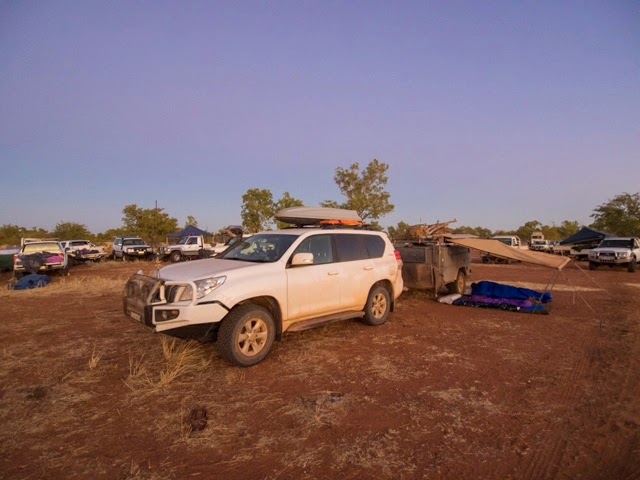Day 55: Paroo and Currawinya
Standing on the banks of the Paroo River with a fishing rod in one hand I have come to the realisation why I enjoy photography so much. I have never understood the desire to spend hours fishing (sorry bro). It may have to do with my limited patience but a fishing rod just spoils a good view.
But I digress as this morning we woke to the sounds of flocks of Galahs skylarking in the trees enjoying the first rays of sunlight. The bush camp we stayed at was on old disused bore with the remnants of an old water trough still trickling water. While no longer providing water to cattle it was a magnet to surrounding wildlife.
Leaving camp we made our way south heading towards Hungerford on the NSW/Queensland Border. Part of this road travels along a large wire fence that was initially installed in an attempt to keep the Queenslanders from trying to enter NSW (or so I have been told). However it was later put to better use keeping the dingoes out to protect the sheep country of the north.
The fence also has the unintended consequence of being a barrier to other animals such as emus, kangaroos and cattle. As you hurtle along the dirt track kamikaze emus who are caught between the road and fence throw themselves in front of the vehicle legs going in all directions. Luckily this road is not well travelled - we could ount the number of cars on our fingers with out taking shoes off - so we spent much of the trip weaving all over the road.
Arriving at Currawinya National Park, famous as a Ramsar Wetland site due to its importance for migratory birds, we headed straight out to the lakes. Lake Numalla is an immense brown soup that extends as far as they eye can see. Unfortunately the birds must have decided that soup was not on the menue as there were none to be seen. This must have been a disappointment for a twitcher who was there with the biggest monocular - unless there was a nudist beach on the other side of the lake i was not aware of.
We then headed to Lake Wyara which is also meant to be a significant spot for wading birds but due to the drought conditions it was dry.
From here we headed to camp, stopping on the way at an old woolshed. Standing inside, the dust flecks shimmered in the light, the sound of corrugated iron echoing through the empty shed. This is in marked contrast to the noise that must have been here as hundreds of sheep baahing would have been only just audible over the humming of the motors running the old shearing wheels.
Getting to camp, we set up on the top of the bank of the Paroo River. Deciding not to fish today ( I just remembered the earlier advice) we sat and enjoyed one of the last fires of the trip along with fresh damper.





























































0 comments: